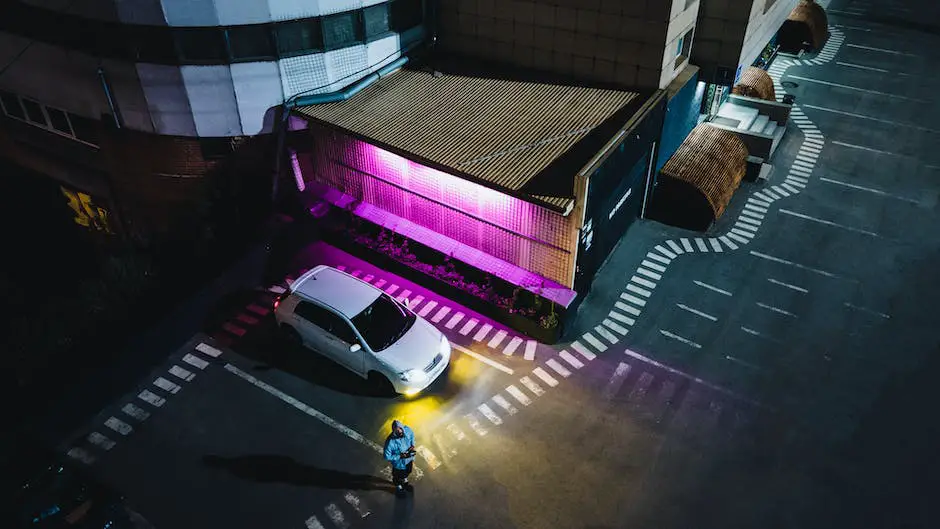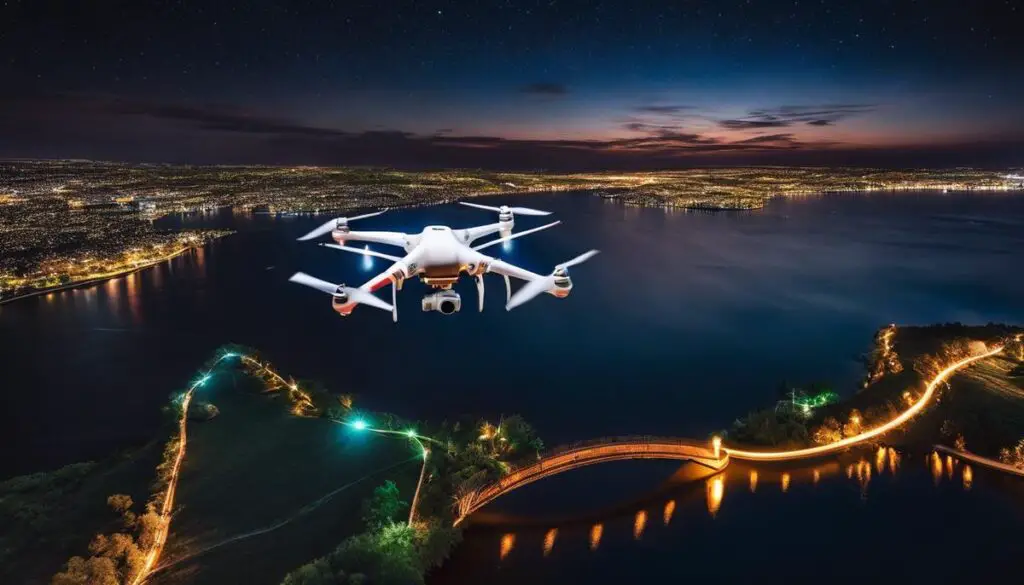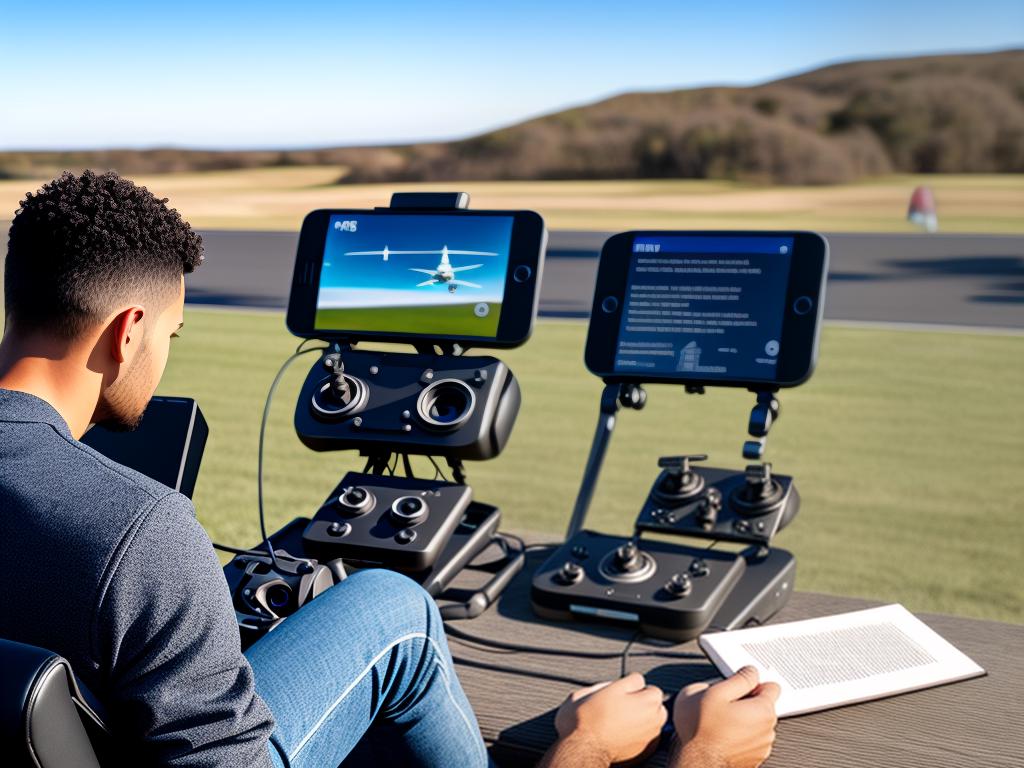In the realm of modern day photography and videography, the art of drone flying holds a distinguished place, unlocking a fresh perspective of capturing the world from above. Among the various facets of this emerging technology, one of the most fascinating is drone night flying, offering a unique viewpoint, especially when illuminated by city lights or nature’s wonders. For enthusiasts and hobbyists keen on mastering this skill, a three-pronged approach can be advantageous. This involves a thorough understanding of the Federal Aviation Administration’s (FAA) rules and regulations pertaining to evening flights, familiarization with suitable equipment such as LED lights and infrared cameras, and acquiring field knowledge of safety practices like pre-flight checks and the appropriate use of return-to-home functions.
Understanding drone regulations for night flying
An Updated Look at FAA Rules for Night Flying: A Detailed Tech-Enthusiast’s Guide
When it comes to drones and other unmanned aircraft systems (UAS), flying at night presents a host of challenges. The US Federal Aviation Administration (FAA), for safety reasons, specifies various rules and regulations for night-time operations. This article will illuminate these technical FAA rules to help drone pilots navigate safely, and legally, in the outer darkness.
Operating UAS at night consists of two distinct parts in current FAA regulations: Part 107 and the new FAA 2021 rules. Here’s an analytical breakdown of both:
- FAA Part 107 Rules for Night Flight
- The New FAA 2021 Night Flight Rules
- Ensuring Safety in Night-time Operations
Under the FAA Part 107, night flight was typically prohibited for commercial drone operations. However, waivers under §107.29—Daylight Operation could be acquired by drone pilots wishing to operate at night. Even though these pilots needed to show their operation could be conducted safely, the process could be time-consuming and tedious.
With the new FAA rules, effective from April 21, 2021, drone pilots no longer need to apply for a waiver to fly at night, provided they adhere to key requirements.
First and foremost, the drone must be equipped with anti-collision lights that can be seen for up to 3 statute miles and have a flash rate sufficient to avoid a collision. These lights should be on and operational during the entire time of the night flight operation.
Second, pilots wanting to fly at night must complete a FAA-approved updated initial test or online training. This includes specific focus on night-time operations and related physiological effects.
Important to note here is the FAA definition of night. According to FAA, night begins at the end of evening civil twilight and ends at the beginning of morning civil twilight, as published in The Air Almanac. This is typically the period 30 minutes after sunset till 30 minutes before sunrise, excluding the period of civil twilight.
While the FAA takes care of legal requirements, flying at night presents unique obstacles that each drone operator should be aware of. These include issues related to visibility, color recognition, depth perception, and focus.
It’s strongly recommended to conduct a thorough pre-flight inspection in well-lit conditions before setting off for any night operation. Additionally, operators should always keep their craft within visual line of sight and avoid overflight of people.
With the right technological tools and comprehensive understanding of FAA regulations, night flying can indeed become a safe and exciting aspect of drone operations. The sky, as they say, is the limit!

Drone equipment for night flying
Harnessing Potential in Nocturnal Drone Operation: Advanced Tips and Techniques
Entering the vibrant, dim-lit world of nocturnal drone operation brings a fresh perspective to aerial videography, photography, and surveillance. While the new FAA rules have clarified the main aspects of night flight, it is essential for operators to widen their understanding and get hands-on with the practical skills required for secure flight.
A fundamental, yet vital part of nighttime drone operability is the use of anti-collision lightings. As a requirement under Part 107, anti-collision lights must be visible for at least 3 statute miles and have a flash rate sufficient to avoid creating a collision risk. This serves as an instant, powerful method of maintaining visibility and communicating the drone’s location to other aircraft, a worthwhile investment that could save your drone—and possibly more—from unforeseen accidents.
Moreover, understanding and implementing effective battery life management is crucial. Nighttime operation can be more taxing on battery life due to higher power consumption of drone lights and other essential equipment. Regular monitoring of battery life can prevent untimely landings and provide time for safe retrieval.
The drone operator is also responsible for ensuring unobstructed communication between the drone and its controller. The absence of visual barriers like foliage or buildings can increase control range significantly, making it tempting to push the drone past the operator’s visual line of sight. This is, however, counterproductive and risky. Advanced drone models allow operators to adjust the communication frequency and transmitter power for best results.
Adding enhancements to the aircraft and controller for operation visibility is also recommended. This includes features such as illuminated landing gear and transmitter backlights. Not only does this add an extra security layer, but it also amplifies the aesthetic appeal adding character to your drone amidst the darkness.
Finally, it’s essential to recognize that mastering night flight doesn’t just require understanding technology in depth or merely having the best gadget. It requires active learning from the experiences and mistakes of fellow drone pilots. Engaging with a community of like-minded enthusiasts through online forums, social media platforms, and local clubs can provide valuable insights and recommendations.
Navigating the unexplored lanes of nocturnal drone operation is, without a doubt, a fascinating journey. With a mindful approach, continuous learning, and the right gear, one can safely unlock a multitude of incredible opportunities using their drones after dark. Whether it’s catching stunning cityscapes shimmering with nocturnal lights, thrilling night races, or industrial inspections, night flight can be beneficial and exciting. Understanding and applying rules, along with valuable hands-on experience, will pave the way for the safe and rewarding exploration of the night sky. There’s a whole new world up there waiting for you!

Practices for safe night flying
Drone Technology: Empowering Safe Night Flights
Flying drones after sundown comes with its own set of unique challenges, such as managing navigation and obstacle detection. However, overcoming these hurdles with technology augments the exhilaration and potential outcomes of night-time drone operations. In addition to following FAA’s regulations and ensuring the incorporation of necessary safety gear like anti-collision lights, there are numerous ways drone pilots can leverage technology to navigate the night sky safely.
Enhancing Visibility with Technology
A critical factor for successful night flights is establishing enhanced visibility. Drone pilots often use lighting enhancements such as high-intensity strobes, LED lights or light belts. Beyond providing an aesthetic appeal to your drone, these enhancements offer substantial practical advantages by increasing visibility and hence the ability to maintain visual line of sight, a fundamental requirement by the FAA. Additionally, consider investing in illuminated landing gear to aid in smooth take-offs and safe landings.
Smart Battery Management
Battery optimization is crucial for nocturnal drone operations. Given the additional power drawn by lights and other accessories, pilots must understand their drone battery’s behavior and limitations. Using smart battery management systems can considerably augment flight efficiency by providing real-time updates about battery status. Also, consider keeping spare, fully charged batteries on hand.
Maintaining Uninterrupted Communication
Drones rely heavily on constant communication with the controller for safe flight and navigation. Any communication breach can have disastrous results, especially during the night. Enabling Return-to-home (RTH) function can be a lifesaver during communication loss, as it enables the drone to autonomously return to its takeoff point. Furthermore, using frequency hopping spread spectrum technology can ensure a steady link between the drone and the controller, thus leading to a safer, undisturbed flight experience.
Leveraging Flight Simulators
Training with flight simulators is an effective way to prepare for night flying. As simulators replicate real-world conditions, experience earned here can provide invaluable foresight for when it matters. By simulating low-visibility conditions, pilots can understand the nuances of nighttime flying without putting their drones at risk.
Embracing Night-time Photography
Night drone flying is not just about the challenge and thrill of flying under a starlit sky, but also about capturing breathtaking images unimaginable during daylight. Pairing a capable drone with a high-quality camera and low-light settings opens up opportunities for creating enchanting and dramatic photography, a genre with growing popularity in recent times.
So, while night-time drone operations might seem daunting at first, embracing proper tools, technology, and techniques can turn these challenges into opportunities. Night flying can offer a new perspective, expand photographic possibilities, and above all else, provide an unparalleled flying experience. Safe flight!

Holding the reins of, and transforming, a hobby into a skill is a worthwhile journey filled with learning and innovation. On the path to becoming accomplished at night flying with DJI drones, being aware of the FAA guidelines ensures you can enjoy the exhilarating experience while adhering to legal provisions. Equip yourself with necessary addons like LED lights and infrared cameras to improve visibility and capture top-notch imagery. Furthermore, polishing your practical abilities like conducting pre-flight checks, selecting ideal launch sites and effectively using return-to-home functions elevate not only your flying experience, but also the quality of footage you capture. With time and continuous efforts, you’ll find yourself deftly manoeuvring this advanced high-tech device, gleaning breathtaking snapshots of the world under the cloak of darkness.
Originally posted 2024-01-06 02:03:57.




